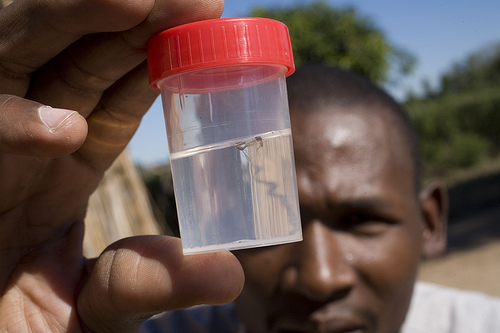
Malaria
The plasmodium parasite (P. falciparum, P. ovale, and P. malariea) enters the blood steam after the bite (~120 sporozoites/bite) of an infected Anophele mosquito and causes this disease. The parasite multiplies in your red blood cells, causing the destruction of red blood cells and the parasite's accumulation in deep vessels. The incubation period of falciparum is approximately 12 days. Patients present with fever, which peaks every third day (due to the release of parasites from red blood cells), headache, muscle pain, a yellowish discoloration of eyes, and an enlarged liver and spleen. There is no rash or lymph node enlargement. Complications of malaria include coma, fits, lactic acidosis, acute kidney failure and dark coloured urine (Hemoglobinuria). Falciparum causes severe malaria, while the other two cause benign malaria. Malaria is diagnosed with several think and thin blood smears examined under the microscope to visualize stages of the parasite in red blood cells. A full blood count may show anemia and reduced platelets. Quinine, tetracyclin, clindamycin and chloroquine may be used to treat malaria. Paracetamol for fever, blood transfusion for severe anaemia, monitoring blood glucose, urine output and blood pressure are essential.
- Important notification about information and brand names used in this slideshow!
- Photo courtesy of Gates Foundation by Flickr : www.flickr.com/photos/gatesfoundation/5644199537/
- Oxford Handbook Of Clinical Medicine

Giardiasis
Giardiasis is caused by Giardia lamblia, (flagellate protozoon) which lives in the jejunum and duodenum. It spreads via food and water. Risk factors include travel, compromised immunity, homosexuality and swimming. This disease is mostly asymptomatic. Patients may have nausea, vomiting, a bloated feeling, lactose intolerance, weight loss and explosive diarrhea. The condition is easily missed and differential diagnoses include any condition that causes diarrhea, tropical sprue and celiac disease. Stool or aspirated duodenal fluid microscopy for cysts, trophozoites and the ELISA test are used for diagnosis. Uncompromising hygiene, screening family members and avoiding milk if features of lactose intolerance are present, are pat of the management procedure. Metronidazole, tinidazole, mecaprine hydrochloride are suitable medications.
- Important notification about information and brand names used in this slideshow!
- Photo courtesy of Tobin by Flickr : www.flickr.com/photos/tobin/2768570238/
- Oxford Handbook Of Clinical Medicine
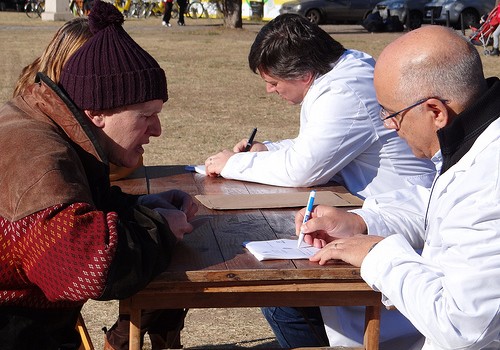
Hepatitis A
Hepatitis A is spread via food and water and is common among travelers. The incubation period is from 2 to 6 weeks. Patients present with fever, feeling ill, joint pain, enlarged liver and spleen and yellowish discoloration of the eyes. Hepatitis A is self-limiting although severe hepatitis (fulminant hepatitis) can occur in rare cases. Chronic liver failure does not occur with hepatitis A. Liver enzymes (AST, ALT) rise around 20-40 days post infection and serum Ig M rises suggesting a recent infection. Treatment is only supportive. Total abstinence from alcohol is essential. Passive immunization with immunoglobulin before traveling will provide protection for
- Important notification about information and brand names used in this slideshow!
- Photo courtesy of Fundación HCV Sin Fronteras by Flickr : www.flickr.com/photos/hepatitis/7705034992/
- Oxford Handbook Of Clinical Medicine
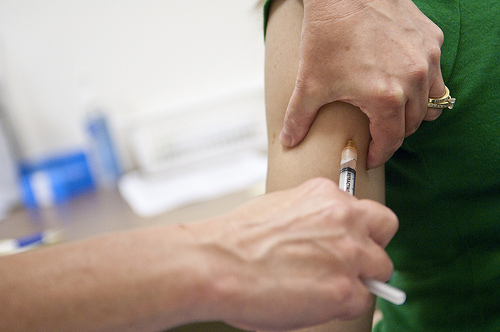
Yellow Fever
Yellow fever must be suspected in travelers who recently visited Bolivia, Brazil, Peru, central and western Africa. It is caused by an arbovirus, spread via the Aedes mosquito. Patients present with fever, nausea, headache, muscle pain, a slow heart rate, frothy urine (due to passage of albumin with urine). In severe forms it can cause prostration, yellowish discolouration of the eyes, blood stained vomit and other bleeding. The urine output may also be reduced. Prevention methods include immunization. Yellow fever can be definitively diagnosed using ELISA. The treatment of yellow fever is symptomatic. Monitoring vitals, urine output, fever chart, and paracetamol for fever are essential.
- Important notification about information and brand names used in this slideshow!
- Photo courtesy of Jeremy Wilburn by Flickr : www.flickr.com/photos/jeremywilburn/4604923723/
- Oxford Handbook Of Clinical Medicine

Montezuma’s Revenge
Montezuma’s revenge is also known as traveler’s diarrhea. It is a collective term for diarrhea illnesses occurring during or after travel. The onset of symptoms (the incubation period) depends on the infective organism. Patients present with watery diarrhea, abdominal cramping pains, vomiting, nausea, bloated feeling, fever and a feeling of general ill health. The most common infective organism that causes Montezuma’s revenge is Escherichia coli (enterotoxigenic). The disease spreads via food and water. It is worth noting that the traveler will get the disease while the locals do not. Bismuth subsalycilate is known to reduce the rate of infections. Safe eating habits and sticking to safe food vendors will reduce the risk of exposure. Most cases of traveler's diarrhea are mild and resolve within a few days. Antibiotics are needed only if the disease is severe and there is blood and mucus in the diarrhea.
- Important notification about information and brand names used in this slideshow!
- Photo courtesy of steve lyon by Flickr : www.flickr.com/photos/chicanerii/2261606140/
- Oxford Handbook Of Clinical Medicine

Dengue Fever
There are four sub-types of dengue virus and infection with one will not provide immunity against the others. It is a mosquito-borne disease. Patients present with fever, muscle pain, abdominal pain, headache, small red patches on their skin, red palms, sub-conjuctival haemorrhage, and a slightly enlarged liver. A full blood count will show a low white cell count, low platelet count (usually less than 100000), a rising packed cell volume (hematocrit). Dengue antibodies will be positive only after 6 days so are not of any immediate clinical value. Blood pressure, pulse pressure, heart rate, urine output monitoring and regular blood counts to monitor the disease progression are essential. The hallmark of dengue fever is fluid leakage from the capillaries and this is highest during the critical phase when the fever starts to come down. Strict monitoring, 2ml/kg/hour fluid restriction (2400ml/day) with occasional fluid bolus as needed to maintain urine output and hydration are critical.
- Important notification about information and brand names used in this slideshow!
- Photo courtesy of Sanofi Pasteur by Flickr : www.flickr.com/photos/sanofi-pasteur/8070850569/
- Dengue Management Guidelines, Ministry of Health, Sri Lanka
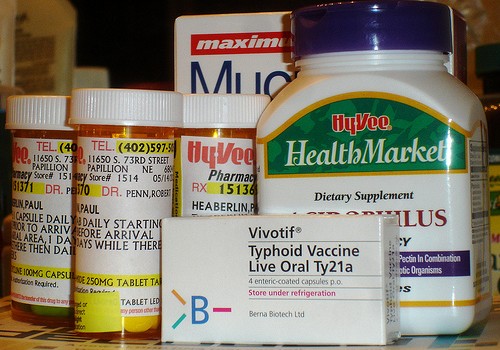
Typhoid
Typhoid is caused by Salmonella typhii. This disease spreads via food and water. The incubation period is around 1 to 3 weeks long. Some individuals recover fully, while others become chronic carriers (individuals who carry the infection without manifesting the disease, capable of infecting others). Patients present with high fever, feeling ill, headache, cough, constipation, coma and delirium. Some get rose spots. Nasal bleeding, abdominal pain and enlarged spleen are other features. A blood culture becomes positive in the first week, and later urine and stool cultures will become positive. If possible, a bone marrow culture may give a high yield. A complete blood count may show low platelets and low white blood cells. Liver enzymes (AST, ALT) may be high. A Widal test is unreliable. Fluid therapy, ciprofloxacin, chloramphenicol and dexamethasone are used in management. Complications of typhoid include bone infections, deep vein thrombosis, myocarditis, cholecystitis, pyelonephritis and meningitis.
- Important notification about information and brand names used in this slideshow!
- Photo courtesy of Paul Heaberlin by Flickr : www.flickr.com/photos/lobsterboy1980/3591499492/
- Oxford Handbook Of Clinical Medicine
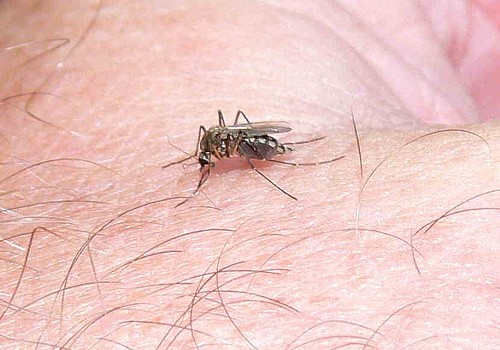
Chikungunya
Chikungunya is caused by an alphavirus carried by the Aedes mosquito. The incubation period of the disease ranges from 1 to 7 days. Patients present with high intermittent fever, feeling ill, joint pains, muscle pains, headache and red eyes. Although the fever subsides in 2 to 3 days, other non-specific symptoms tend to persist for 1 to 2 weeks. A definitive diagnosis is not necessary for commencement of treatment, as the diagnosis is mainly clinical. RT-PCR and other serological methods may be used for research purposes, but are very expensive. Although there is no effective approved vaccine available to prevent chikungunya, research into the matter is well underway. The usual practical prevention methods such as the use of mosquito repellents and elimination of mosquito breeding sites are very effective. Treatment of chikungunya may include supportive therapy and drugs like oseltamivir.
- Important notification about information and brand names used in this slideshow!
- Photo courtesy of Jimmy Smith by Flickr : www.flickr.com/photos/jimmysmith/445505798/
- Oxford Handbook Of Clinical Medicine
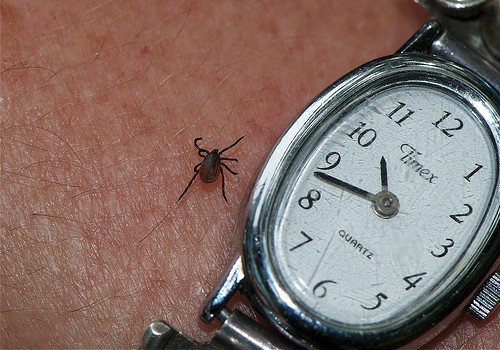
Lyme Disease
Lyme disease is caused by Borrelia burgoferi, and is a tick-borne infection first discovered in Lyme, Connecticut. Patients may present with a rash called “erythema chronicum migrans” ( bull's eye rash), flu-like symptoms, a reduced level of consciousness, impaired higher brain functions, enlarged lymph nodes, joint pain, myocarditis, heart block, cranial nerve palsies, neuropathy and meningitis. Prevention of Lyme disease may be done by using tick repellents, using tick collars for pets and inspecting the skin thoroughly after visiting high risk areas. Vaccination is also available for individuals living in endemic areas. Prophylactic antibiotic therapy (doxycycline) also has merit. Doxycycline is used as treatment of choice for Lyme disease while amoxicillin is preferred in children and in pregnant patients. If complicated intravenous benzyl-penicillin or cefuroxime may be used.
- Important notification about information and brand names used in this slideshow!
- Photo courtesy of Jerry Kirkhart by Flickr : www.flickr.com/photos/jkirkhart35/3511632499/
- Oxford Handbook Of Clinical Medicine

Norovirus
Norovirus is also known as the winter vomiting bug because this infection is common in winter when a lot of people live at close quarters indoors. It spreads from person to person via direct contact and to a lesser extent via contaminated food and water. This virus is very easily aerosolized from infected vomitus, flushing of a toilet, and so on. Patients may present with nausea, vomiting, cramping abdominal pains and diarrhea. The incubation period is 2 days. Strict hygiene methods are very effective against the spread of the disease. Hand washing and proper waste disposal take priority. The diagnosis is mainly clinical although the virus can be identified using PCR. Treatment is supportive. Adequate fluid intake to avoid dehydration is very important.
- Important notification about information and brand names used in this slideshow!
- Photo courtesy of fred owsley by Flickr : www.flickr.com/photos/fredowsley/3410671124/
- Oxford Handbook Of Clinical Medicine


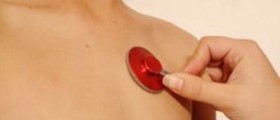





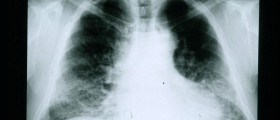
_f_280x120.jpg)
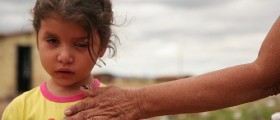

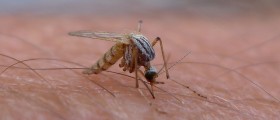


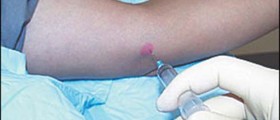




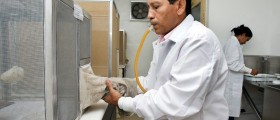






Your thoughts on this
Loading...